Case 1: Developing the GenreRudolf Ackermann’s Forget Me Not for 1823 is widely recognized as the first British literary annual. In the Advertisement that prefaces the edition, Ackermann claims his volume is an “attempt to rival the numerous and elegant publications of the Continent expressly designed to serve as tokens of remembrance, friendship, or affection.” Like the German and French annuals to which Ackermann refers, the first Forget Me Not included many features that would come to characterize the genre: an attractive binding, a variety of contemporary literary material, and numerous high-quality steel engravings. However, examining annuals published prior to 1826, one can see that the genre was still developing. Most importantly, elements of other popular genres such as almanacs and pocket-book diaries linger in the pages of annuals such as Friendship's Offering, The Literary Souvenir, and Remember Me!. Containing weather guides, diary pages on which to record appointments, and information charts about everything from tipping coachmen to the term dates at Oxford, these early annuals reveal connections to their more practical predecessors. While certainly beautiful books, early annuals also encouraged owner-readers to leave their mark upon them. Pages with riddles seem to beg for written responses and blank calendars call for appointments. After 1826, diary pages fell away entirely and so too did charts, tables, and games. No longer walking the line between utility and beauty, later annuals became unabashed volumes of luxury and entertainment.
Items No. 1a and No. 1b: Forget Me Not with Slipcase. While published four years after the first volume of the Forget Me Not, the physical appearance of the Forget Me Not for 1827 is largely the same as the original. Its green glazed paperboard covers printed with steel-plate engravings and its diminutive size (5 x 3 inches) remained distinctive characteristics of the Forget Me Not until 1832 when it was produced in a larger size (6 x 3 ¾ inches). Attention to outer appearance made the Forget Me Not impressive; even the back cover, pictured here, was illustrated with a steel engraving. The original protective slipcase for the 1827 edition has been lost, though the printed papers from the case were re-pasted onto the one shown here at a later date. |
|
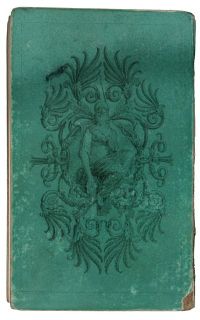 [click image to enlarge] |
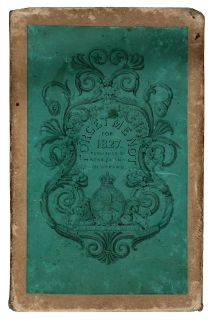 [click image to enlarge] |
Items No. 2 and No. 3: Riddle and Diary Pages in the Friendship's Offering The Friendship's Offering for 1825 is the latest edition of the annual that incorporates almanac elements; the volume contains a compendious weather guide, twenty-five charades, twenty-two riddles, and a sixty-page diary section. The Robertson Davies Library at Massey College holds two copies of the 1825 Friendship's Offering. In both copies, many of the riddles and charades have been answered; for example, in the pages displayed here from copy 2, someone has written “advice” in response to charade 12. Following the riddles and charades is a diary section. Rather than record appointments, the previous owner of this particular copy has used the space for January to write a short essay and the space for February to write two poems in French. The essay, the first page of which is pictured here, reads: “North Foreland Lighthouse, is a strong Octagon tower built of Brick, which was erected in 1683 as a sea-mask by the Trinity house corporation at the public expense, it is near 80 feet high, & consists of many lamps which are kept burning all night, to be a guide for ships sailing near the coast, the cape on which it is situated projects far into the sea, in the form of a bastion.” |
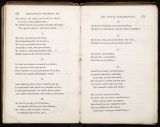 [click image to enlarge] |
 [click image to enlarge] |
Item No. 4: Information Tables Like the Friendship's Offering, the Remember Me! for 1825 contains more than prose and poetry. The latter portion of the annual is devoted to non-literary didactic and practical information. Displayed here are the final page of a list of bankers in London and Westminster and a table with the term dates for Oxford and Cambridge. |
|
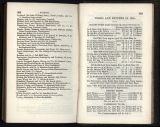 [click image to enlarge] |
|
Item No. 5: Signature Plates In addition to almanacs, early annuals were connected to albums and commonplace books—blank volumes which were then filled with personal notes, favorite passages from books, drawings, and autographs. Here the idea of signing a lady’s album is taken to the commercialized extreme with lithographed signature plates from authors including Coleridge and Wordsworth. |
|
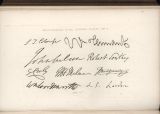 [click image to enlarge] |
|
| < Previous | Next > |
